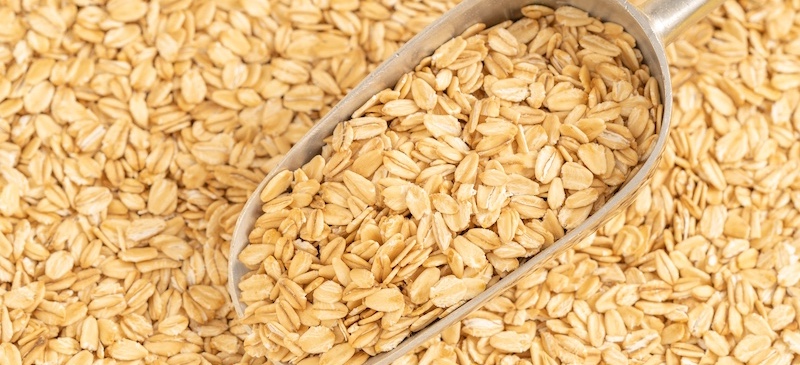This Dr. Axe content is medically reviewed or fact checked to ensure factually accurate information.
With strict editorial sourcing guidelines, we only link to academic research institutions, reputable media sites and, when research is available, medically peer-reviewed studies. Note that the numbers in parentheses (1, 2, etc.) are clickable links to these studies.
The information in our articles is NOT intended to replace a one-on-one relationship with a qualified health care professional and is not intended as medical advice.
This article is based on scientific evidence, written by experts and fact checked by our trained editorial staff. Note that the numbers in parentheses (1, 2, etc.) are clickable links to medically peer-reviewed studies.
Our team includes licensed nutritionists and dietitians, certified health education specialists, as well as certified strength and conditioning specialists, personal trainers and corrective exercise specialists. Our team aims to be not only thorough with its research, but also objective and unbiased.
The information in our articles is NOT intended to replace a one-on-one relationship with a qualified health care professional and is not intended as medical advice.
Chlormequat in Oats and Other Foods: What You Need to Know
May 11, 2025

Chlormequat is making headlines as more consumers grow concerned about its presence in everyday food products, especially oats. As awareness grows, so do questions: What is chlormequat? Why is it in food? And most importantly, is it safe to eat?
This article answers those questions and provides actionable advice on how to reduce your exposure to chlormequat in oats and other foods.
What is chlormequat?
Chlormequat is a plant growth regulator and toxic chemical labeled as a pesticide by the U.S. Environmental Protection Agency (EPA) used in agriculture to control the height and strength of cereal crops like wheat, barley and oats. By limiting the growth of stalks, it helps prevent plants from falling over (a problem known as “lodging”) and allows for easier harvesting and higher yields.
Although it’s primarily used on non-food crops in the U.S., its application on imported grains means chlormequat in food has become a growing concern.
Why is it showing up in food?
Chlormequat in oats has been detected in testing by consumer advocacy groups and regulatory bodies. The main reasons for its presence in food include:
- Imported oats: Some oats sold in the U.S. are sourced from countries where this pesticide is approved for use directly on food crops.
- Regulatory changes: In 2018, the EPA set tolerances for chlormequat residues in imported foods, effectively allowing its presence in the American food supply.
- Cross-contamination: Even when not applied directly to food crops, it can enter the food chain through soil or water systems shared with treated plants.
Recent studies have identified the presence of chlormequat in various oat-based food products sold in the United States. This chemical is used to control the growth of cereal crops and has been detected in several popular food items.
According to the Environmental Working Group (EWG), chlormequat was detected in 92 percent of oat-based foods tested in 2023. Notable products with detected levels include:
- Quaker Oats Old Fashioned
- Quaker Instant Oatmeal Maple & Brown Sugar
- Quaker Chewy Dark Chocolate Chunk Granola Bars
- Quaker Oatmeal Squares (Honey Nut and Brown Sugar)
- Quaker Simply Granola Oats, Honey & Almonds
- Cheerios (Original, Honey Nut, Frosted, Oat Crunch Oats & Honey)
- Great Value Oats & Honey Granola
These findings were based on tests conducted by EWG and other organizations, which have raised concerns about the potential health impacts of chlormequat exposure. In addition, four in five people tested in the study had chlormequat in their urine.
The study found chlormequat in:
- 69 percent of samples from 2017
- 74 percent from 2018-2022
- 90 percent in 2023
This increase suggests rising exposure, likely due to the import of grains treated with chlormequat following regulatory changes in 2018 and 2020.
The same study tested oat and wheat-based products purchased in the U.S. during 2022 and 2023. Findings included:
- Chlormequat detected in 92 percent of conventional oat-based products
- Detected in 22 percent of wheat-based products
- Only 12.5 percent of organic oat products contained detectable levels
It’s important to note that while chlormequat is not approved for use on food crops in the U.S., it is permitted on imported oats and other grains. This regulatory allowance may contribute to its presence in the food supply.
If you’re concerned about chlormequat exposure, consider choosing organic oat products, as they are less likely to contain synthetic growth regulators.
Risks and side effects
Animal studies have linked high levels of chlormequat exposure to developmental and reproductive toxicity. While the EPA and other agencies set maximum residue levels considered “safe,” ongoing research raises concerns about long-term exposure and the cumulative effects of low doses.
Potential risks associated with chlormequat in food may include:
- Hormonal disruption
- Impaired fertility (observed in animal studies)
- Liver and kidney effects
- Unknown long-term impacts, especially for vulnerable populations like children
Currently, there is limited data on its effects in humans, which is why advocacy groups are pushing for stricter regulation and more transparency.
What can consumers do?
As more attention is drawn to chlormequat in oats and other food products, consumers are not powerless. Here’s how you can take control:
- Stay informed: Look for testing reports from organizations like EWG or Consumer Reports.
- Read labels: While chlormequat won’t be listed, understanding where your food is sourced can help.
- Support policy changes: Advocacy and consumer pressure can drive regulatory agencies to revisit what’s allowed in the food supply.
How to avoid
Avoiding chlormequat in food may take some effort, but it’s possible with a few key strategies:
- Choose organic oats and grains: Organic certification prohibits the use of synthetic plant growth regulators.
- Buy from trusted brands: Some companies voluntarily test their products and publish results, giving consumers peace of mind.
- Limit processed oat-based products: Instant oatmeals, granola bars and cereals may contain imported oats with residues.
- Cook from scratch: Homemade meals give you control over ingredients and sourcing.
Conclusion
- Chlormequat is a lesser-known agricultural chemical that’s quietly entering the American diet, especially through chlormequat in oats.
- While regulatory agencies maintain current levels are safe, ongoing research and consumer concern suggest it’s wise to limit exposure.
- By staying informed and making conscious choices, you can reduce your intake of chlormequat in food and advocate for a safer, more transparent food system.

